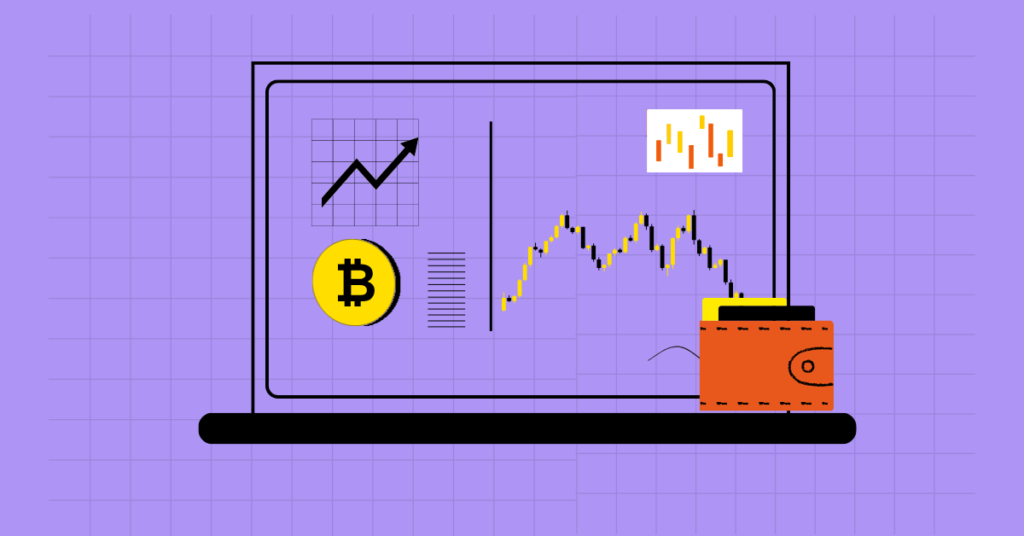
In the world of cryptocurrency trading, the term “Bitcoin breakout” frequently surfaces as a key concept among traders and investors. But what exactly does it mean? In this comprehensive guide, we’ll delve into the concept of Bitcoin breakouts, why they matter, and how you can effectively identify and leverage them in your trading strategy.
What is a Bitcoin Breakout?
A Bitcoin breakout refers to a significant price movement in Bitcoin (BTC) that occurs when its price moves beyond a predetermined support or resistance level. These levels are identified through technical analysis, and the breakout signifies a potential shift in the market trend.
In simpler terms, a breakout happens when Bitcoin’s price breaks out of its usual range and starts trending in a new direction. This could indicate the beginning of a strong upward or downward trend, offering traders opportunities to capitalize on these movements.
The Importance of Breakouts in Bitcoin Trading

Breakouts are crucial for several reasons:
- Trend Confirmation: A breakout can confirm the start of a new trend. For instance, if Bitcoin breaks above a resistance level, it might signal the beginning of a bullish trend. Conversely, a breakout below a support level might indicate a bearish trend.
- Increased Volatility: Breakouts often come with increased volatility. This means that while the price movement can present opportunities for profit, it can also be risky. Traders need to be prepared for sudden and significant price changes.
- Trading Opportunities: Identifying and reacting to breakouts can help traders make informed decisions. By understanding the signs of a potential breakout, traders can enter or exit trades at optimal times, potentially maximizing their profits.
Types of Bitcoin Breakouts
- Bullish Breakouts: A bullish breakout occurs when Bitcoin’s price rises above a significant resistance level. This often suggests that the market sentiment is positive, and the price might continue to increase. Traders typically look for confirmation through increased trading volume or other technical indicators.
- Bearish Breakouts: A bearish breakout happens when Bitcoin’s price falls below a key support level. This indicates that the market sentiment is negative, and the price might continue to decline. Similar to bullish breakouts, traders look for confirmation through volume and other technical signals.
How to Identify Bitcoin Breakouts
- Technical Analysis: One of the primary methods to identify breakouts is through technical analysis. Traders use various chart patterns and indicators to predict potential breakouts. Some common patterns include:
- Triangles: Ascending and descending triangles can signal breakouts. In an ascending triangle, the price consolidates at higher lows and eventually breaks above the horizontal resistance. In a descending triangle, the price consolidates at lower highs and breaks below the horizontal support.
- Flags and Pennants: These are continuation patterns that often signal a breakout. A flag pattern occurs after a strong price movement and forms a rectangular consolidation. A pennant pattern is a small symmetrical triangle that forms after a strong price movement.
- Head and Shoulders: This pattern signals a reversal and can indicate a breakout when the price moves beyond the neckline.
- Volume Analysis: Volume plays a crucial role in confirming breakouts. A significant increase in trading volume during a breakout often indicates strong market interest and can validate the breakout’s legitimacy.
- Support and Resistance Levels: Identifying key support and resistance levels on a Bitcoin price chart can help predict potential breakout points. Support levels are price points where the asset has historically had difficulty falling below, while resistance levels are points where the price has struggled to rise above.
- Moving Averages: Moving averages, such as the 50-day or 200-day moving average, can help identify trends and potential breakouts. A price crossing above or below these moving averages can signal a breakout.
Strategies for Trading Bitcoin Breakouts

- Pre-Breakout Preparation: Before a breakout occurs, traders should prepare by identifying key support and resistance levels and monitoring price movements closely. Setting alerts for these levels can help traders react promptly.
- Entry and Exit Points: Traders often enter a trade when the price breaks above resistance (for bullish breakouts) or below support (for bearish breakouts). Setting stop-loss orders and profit targets can help manage risk and lock in gains.
- Risk Management: Given the volatility associated with breakouts, risk management is crucial. Traders should consider their risk tolerance and adjust their position sizes and stop-loss levels accordingly.
- Post-Breakout Analysis: After a breakout, it’s important to analyze the price action and volume to confirm the breakout’s strength. If the breakout is strong and supported by high volume, it may indicate a continued trend. If the breakout lacks volume or quickly reverses, it could be a false breakout.
Challenges and Considerations
- False Breakouts: Not all breakouts lead to sustained trends. Sometimes, a breakout may quickly reverse, leading to losses for traders. It’s essential to use confirmation tools and risk management strategies to mitigate this risk.
- Market Conditions: Broader market conditions and news events can impact Bitcoin breakouts. Economic developments, regulatory changes, and other factors can influence price movements and create unexpected volatility.
Bitcoin breakouts are a vital concept in cryptocurrency trading, offering significant opportunities for those who can identify and act upon them effectively. By understanding the nature of breakouts, using technical analysis, and employing sound trading strategies, traders can navigate the complexities of Bitcoin markets and potentially achieve profitable outcomes. As with any trading strategy, it’s essential to stay informed, manage risks, and continuously refine your approach based on market conditions and personal experiences.